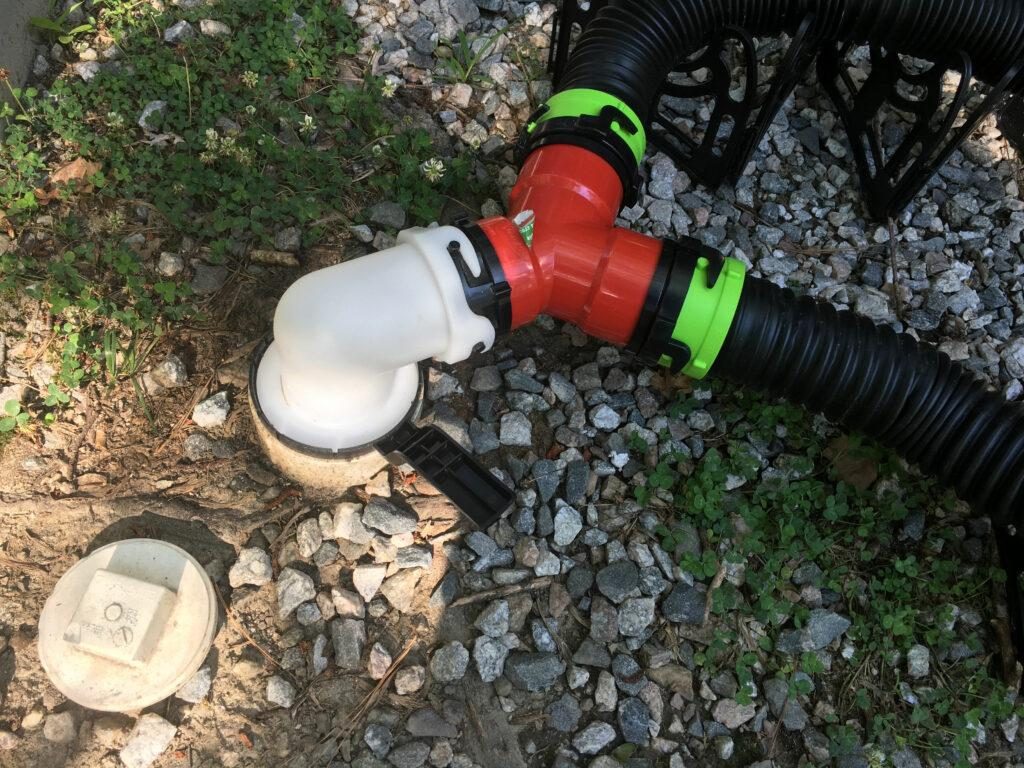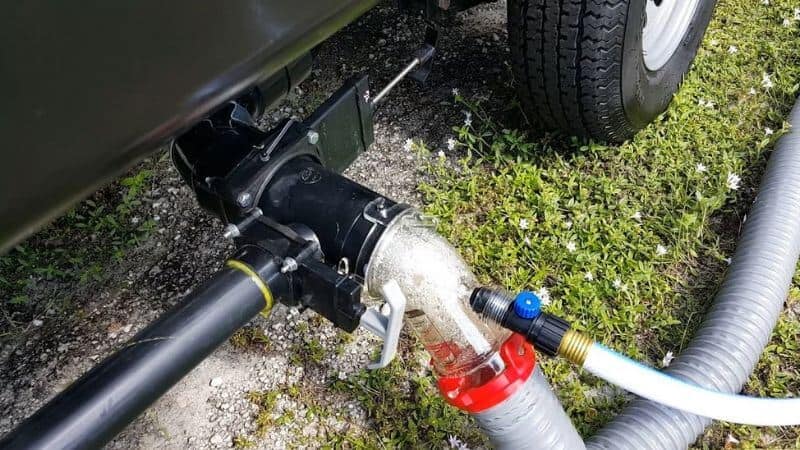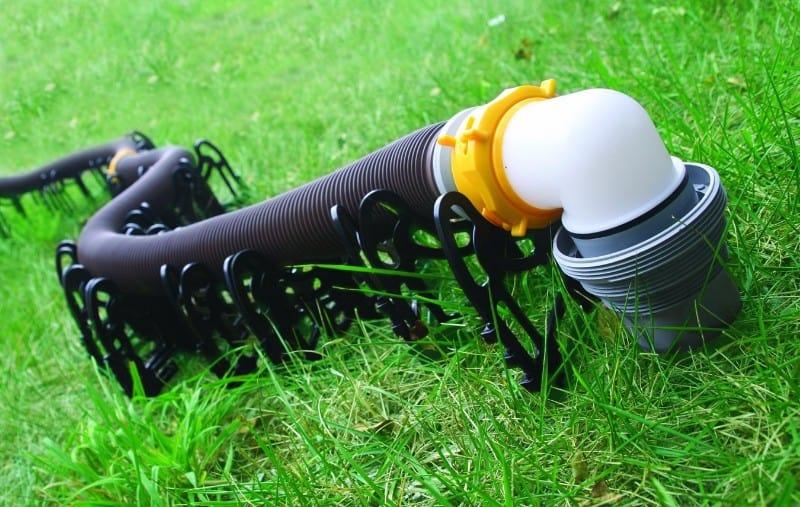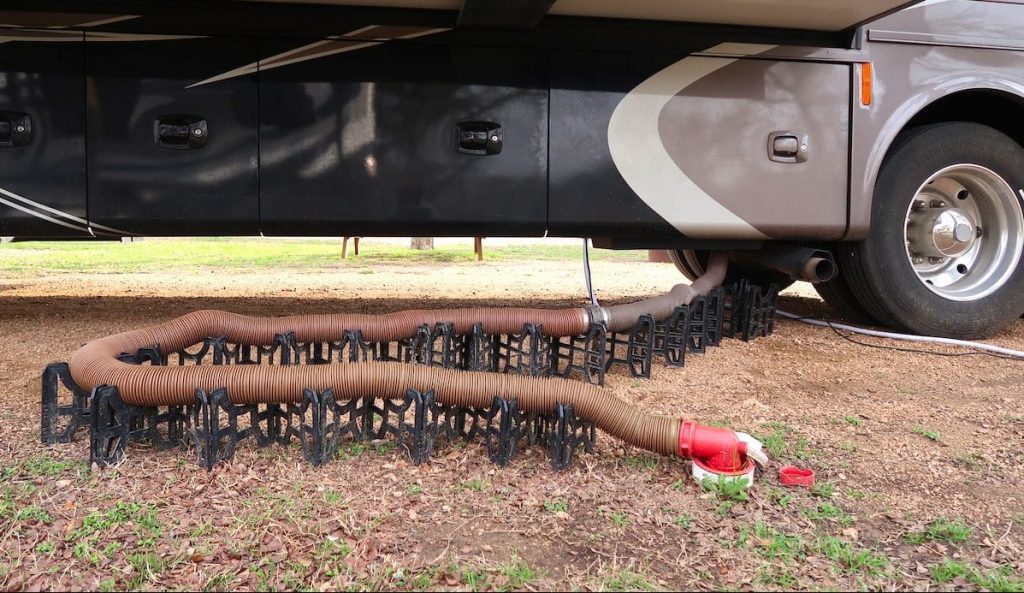An enjoyable camping trip can work as a tonic to refresh your body and mind. However, the after-camping tasks, including packing and unpacking, washing dirty clothes, and more, are not so pleasant. The most unpleasant of all is undoubtedly dumping the waste tank. When you are exhausted after a long drive from the trip, it’d be great to know how to dump RV waste at home, right?
You can also take your camper to a sewage pumping station and dump the wastage in their facilities. What if you don’t find one on your way back home? You definitely don’t want to drive around looking for a dumping station because you are tired and want to go home. So, it’s better if you can dispose of the contents of your holding tanks at home.
Contents
Is it Legal to Empty RV Tanks at Home?
Don’t worry, it’s absolutely legal. But there are a few catches, and you have to be careful about avoiding any unwanted legal drama.
These are toxic waste materials, so you should be careful about disposing them at the right place. That being said, you cannot empty these things into the storm drain because it leads to water reservoirs. You will get into legal trouble for polluting clean water.

Find out the municipal sewer line to empty the contents. If you have one, a residential septic tank can be another good option. You know that the wastage from the septic tank breaks down and turns into fertilizer. To make this process easier. Always use eco-friendly cleaning agents because harsh ones kill the bacteria that help with this process.
Four Methods about How to Dump RV Waste at Home?
Now, let’s get down to business. How to dump RV tanks at home. There are actually several ways of disposing of the materials of the black and gray tanks.
Here are a few methods:
Use a Bucket
A basic, simple, but dreary method of emptying the RV tanks. All you have to do is to take a bucket, fill it with the tank’s content, and empty it into the toilet to flush the wastage down. You should wear goggles (if necessary) and thick rubber gloves. An overall would be fine for protecting you from splotches. To move better and avoid spillage, don’t fill the bucket to the brim. Be careful when moving the filled bucket from the tank to the toilet because spilling anything will double the cleaning work.
This is how to dump RV waste at home if you want to save some money. You practically don’t need to buy anything for this cleaning task. However, it’s kind of disgusting to carry the septic waste in an open container. It can be tiresome if you have to empty a large waste tank that is almost full.
Also, this method requires having a septic tank at home, which should be connected to the toilet so that the dumped waste goes there directly.
A Macerator Pump
Using a macerator pump takes the physical labor out of the dumping job and makes it much faster. Another positive side is that this pump breaks down large waste pieces for easier disposal.

Connect the waste tank’s outlet hose to the pump’s input valve. Hook up one end of a long hose to the outlet valve and place the other end to the nearest toilet. Start the operation by opening the waste tank’s outlet valve and switching on the pump.
As mentioned earlier, this pump breaks the solid waste down before sending them down to the outlet hose. It eliminates the chance of clogging when you are flushing the waste down the toilet.
This method of how to dump RV waste at home is a bit expensive. Depending on the design, a macerator pump could cost between $100 and $500 and you may have to purchase the hose separately for some units. Also, this method poses the risk of a hazard if there is a leak in the hose or any of the connections. So, check everything carefully before starting the cleaning job.
Pour into the Septic Tank
If your home has a septic system, there should be a metal or PVC cleanout pipe somewhere around the house. This is mainly for the purpose of cleaning the tank. You will find it easily as its opening sticks out of the ground.
Hook up the RV sewer hose to the cleanout pipe, though you will need proper fitting hardware to attach them with each other. Connect the other end of the sewer hose to the waste tank’s valve. The waste will flow from the tank to the sewer system.
Park the RV on an elevated place to keep the hose sloped down on its way to the septic tank. Otherwise, the contents won’t flow down freely. Of course, you won’t face this problem if using a macerator pump as it does not need a sloped angle to pull the waste out and push it to another direction.
Dump into the City Sewer

This is a laborious job because you need to locate its position and dig the ground to access the opening. Just like discarding the waste into the septic tank, this is how to dump RV waste at home without spending much.
The cleanout port of the city sewer is buried at least four inches below the ground. There should be a straight line between your house and the nearby road. The city sewer drain is somewhere along this line connected to your home’s sewer pipe. Use a shovel to poke along this line and find the opening. Upon finding, open the port and connect a hosepipe to the waste tank’s valve and the access port. The process is similar to dumping the waste into the septic tank.

City sewer’s drainage system may have lethal gases inside as it does not come to open air’s contact. So, be careful when opening the port. Also, check with your municipality to see if dumping waste in this way is legal.
